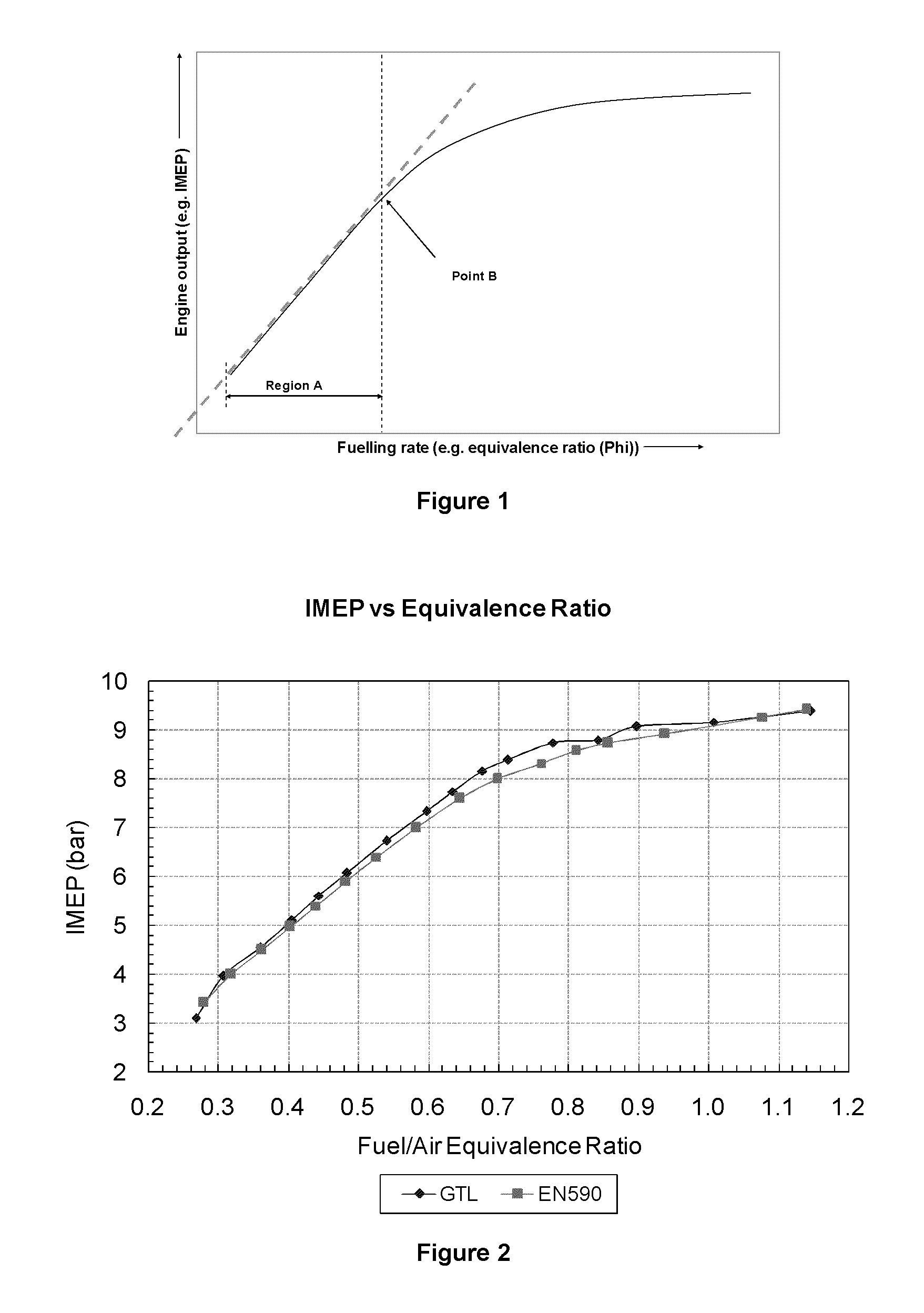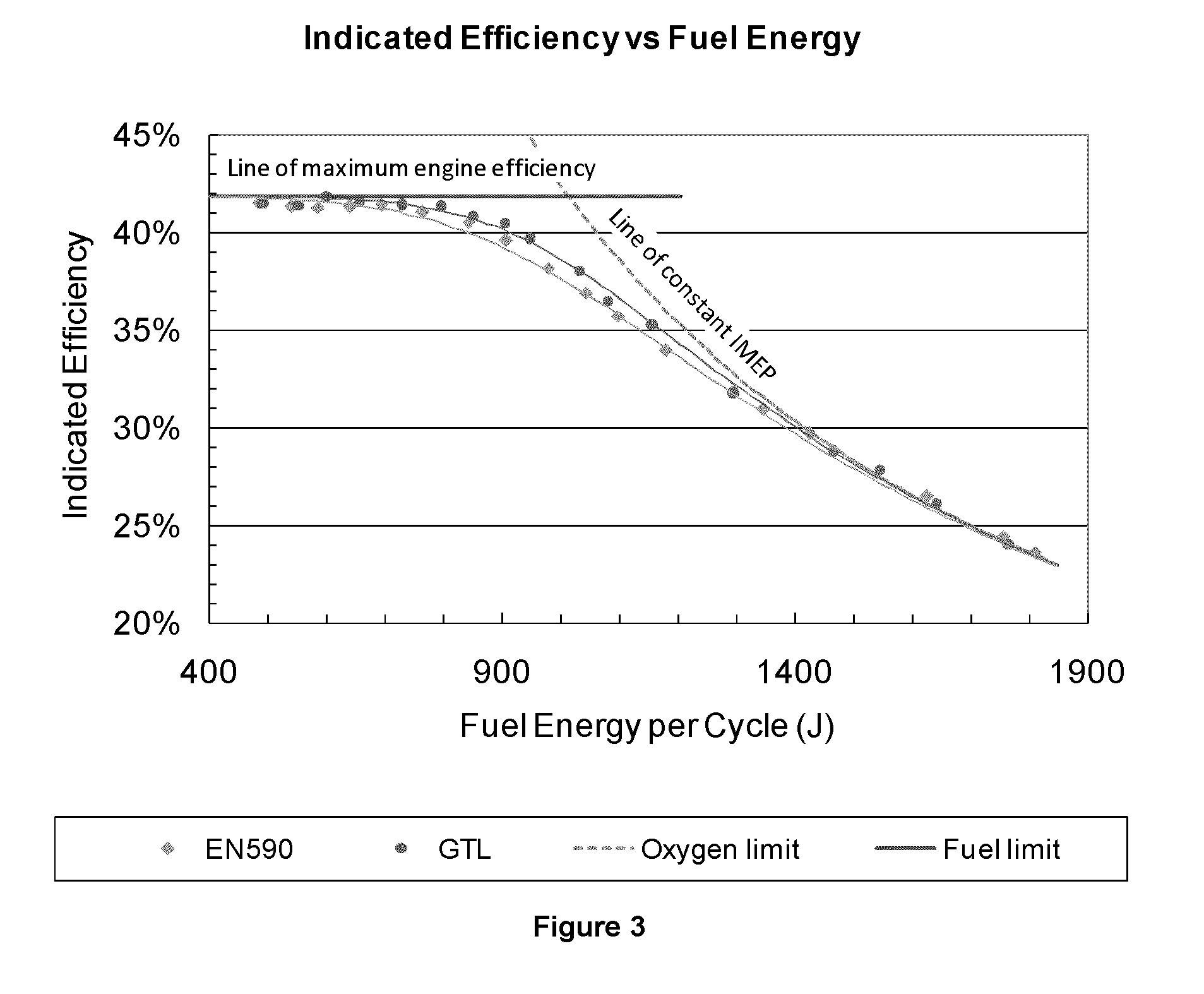Diesel engine efficiency improvement
a technology of diesel engine and efficiency improvement, applied in the direction of machines/engines, mechanical equipment, hydrocarbon oil treatment products, etc., can solve the problems of reducing fuel efficiency, requiring periodic online re-generation, and unburned hydrocarbons, so as to improve the efficiency of the engine and increase the engine efficiency. the effect of 1%
- Summary
- Abstract
- Description
- Claims
- Application Information
AI Technical Summary
Benefits of technology
Problems solved by technology
Method used
Image
Examples
example
[0050]Engine testing was carried out over a range of air / fuel conditions using two test fuels:[0051]GTL, a fully-synthetic FT-derived diesel; and[0052]EN590, a representative crude-derived reference European diesel.
TABLE 1Properties of test fuelsCrude-derived dieselFT dieselFuel propertyUnitEN590GTLDensity @ 20° C.g · cm−60.82970.7647Flashpoint° C.6063Viscosity @ 40° C.cSt2.732.46CFPP° C.−8−5Sulphur contentppmCetane number54.8>74Carbon contentMass %86.285.0Hydrogen contentMass %13.815.0Total aromatic contentMass %27.90.14Lower heating valueMJ / kg42.7543.81
[0053]Engine testing was conducted on a Ricardo Hydra single cylinder research engine which was configured to resemble a modern passenger car diesel engine.
TABLE 2Hydra engine specificationsEngine parameterUnitValueBoremm80.26Strokemm88.90Swept volumecm3450Compression ratio16:1Fuel injection systemCommon rail - DI
[0054]The test procedure involved running the engine under stable conditions and gradually increasing the injection durat...
PUM
 Login to View More
Login to View More Abstract
Description
Claims
Application Information
 Login to View More
Login to View More - R&D
- Intellectual Property
- Life Sciences
- Materials
- Tech Scout
- Unparalleled Data Quality
- Higher Quality Content
- 60% Fewer Hallucinations
Browse by: Latest US Patents, China's latest patents, Technical Efficacy Thesaurus, Application Domain, Technology Topic, Popular Technical Reports.
© 2025 PatSnap. All rights reserved.Legal|Privacy policy|Modern Slavery Act Transparency Statement|Sitemap|About US| Contact US: help@patsnap.com



